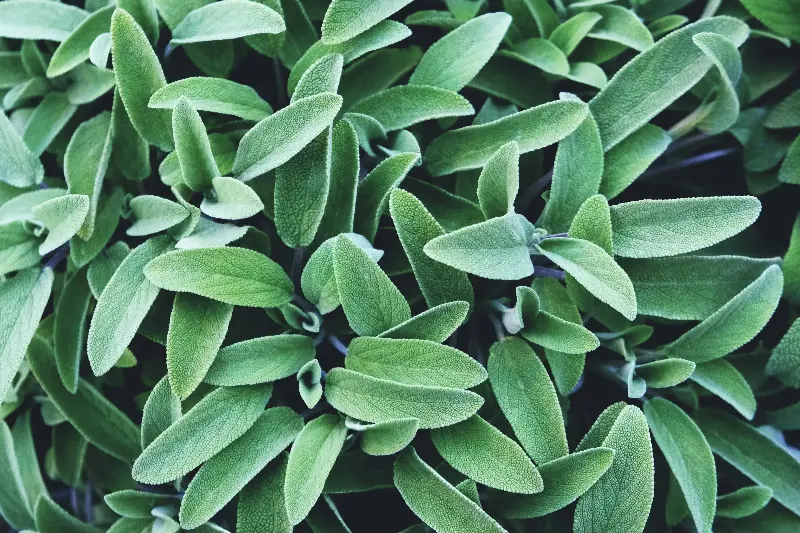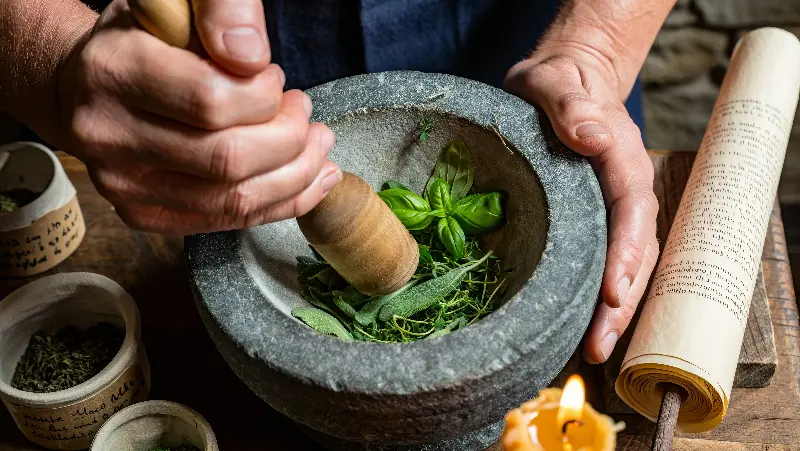Sage has a reputation as old as civilization itself, with a journey that wanders from hours of candlelit ritual to the daylight gleam of the modern kitchen. Few herbs have claimed such a curious and multifaceted role in both mystic and culinary traditions. Today, we dig into the fascinating journey of sage—a fragrant leaf with stories etched deep in the world’s history, kitchens, and wellness rituals.

Ancient Mysticism and Symbolism
Long before sage seasoned the roast chicken or filled our kitchen shelves, it occupied a place of high esteem in the temples and homes of ancient cultures. The Romans called it “salvia,” derived from the Latin word “salvare,” meaning “to heal” or “to save.” But their appreciation extended much further than mere medicine. Romans believed sage possessed sacred qualities, using it in ceremonial offerings to the gods. Its gathering was a solemn event, performed with ritual tools and strict purity guidelines—evidence of its revered status.
The Greeks, ever proponents of reason, also indulged in a little mysticism when it came to sage. They associated it with wisdom and longevity. According to legend, the goddess Aphrodite brought sage to heal after other herbs failed, blessing it with unique healing powers. Ancient Egyptians, meanwhile, thought so highly of sage’s fertility-promoting capabilities that it was offered to pharaohs and woven into their complex belief systems about life, death, and rebirth.
Throughout the Middle Ages, European monks grew sage in monastic gardens, not only for culinary use but also for warding off evil spirits. Even today, many cultures burn bundles of sage to cleanse spaces of negative energies—a practice known as smudging, rooted in Indigenous traditions across North America.
From Apothecaries To Kitchen Shelves
While sage had an enchanting allure in spiritual circles, it also built a strong reputation in early medicine. It was considered a panacea, included in everything from tonics treating sore throats to poultices for healing wounds. The oft-repeated medieval saying, “Why should a man die while sage grows in his garden?” speaks to its perceived power over illness and age.
Sage’s therapeutic journey was not limited to Europe. Traditional Chinese Medicine mentions it as a way to combat digestive complaints while Indian Ayurveda still includes sage in treatments for sore throats, mouth inflammations, and to promote mental clarity.
As global trade flourished and the world became smaller, so did the distance between sage’s medicinal and culinary fame. By the Renaissance, its presence in pantries was almost mandatory, favored not just for flavor but also for its ability to preserve foods. Before refrigeration, sage was prized for its antimicrobial qualities, helping extend the life of meats and cheeses.

The Culinary Canvas: Sage in The Modern Kitchen
Today, sage is considered one of the essential kitchen herbs, especially in Mediterranean and British cuisine. Its robust, earthy flavor and slightly peppery bite lend themselves beautifully to rich dishes. Think Italian saltimbocca—a delicate balance of veal, prosciutto, and sage leaves, pan-seared to perfection. Or stuffing for Thanksgiving turkey, where sage infuses bread and vegetables with a warmth that makes many a holiday memory.
Sage doesn’t just show up in the classics. Modern gastronomes have found creative ways to invite sage’s flavor into an array of dishes. Fresh or fried, sage leaves make an aromatic garnish on creamy butternut squash soups. Cooks blend it into compound butters, toss it with roasted vegetables, or swirl it through pastas and risottos. In recent years, mixologists have even used sage syrup in cocktails, lending a subtle herbaceous note that pairs surprisingly well with gin and citrus.
For those venturing into the kitchen, sage can seem intimidating—its intensity is best handled with respect. A little goes a long way, and its profile shines best when paired with hearty, savory ingredients like pork, sausage, beans, or root vegetables. Dried sage is potent; fresh sage is softer, yet still robust. Both forms carry a hint of camphor and eucalyptus, making them unique among kitchen herbs.
Sage and Wellness: More Than Just Flavor
While sage’s medical miracles may not rival today’s pharmaceuticals, modern science continues to back up some of its legendary uses. Recent studies point to compounds in sage—such as rosmarinic acid and cineole—that have anti-inflammatory and antioxidant properties. Some research suggests sage tea can aid digestion, soothe a sore throat, and even enhance memory. In fact, the herb’s reputation as a wisdom tonic gets a nod from neuroscience, with scientists investigating its potential role in supporting cognitive function.
Elsewhere, the practice of burning sage as a purifier is resurging, adopted by wellness seekers for its aroma and alleged energy-clearing abilities. Whether you savor sage as a tea for tranquility, a balm for the senses, or an aromatic addition to your favorite meals, it’s clear that this leaf still holds a multitude of gifts.
The Journey Continues
From mystical rituals in distant temples to sumptuous spreads on family tables, sage endures not just as a seasoning, but as a symbol—of healing, wisdom, and well-being. Its tale is a reminder that the simplest kitchen herbs often have the richest stories, inviting us to savor both flavor and tradition in every leaf. Next time you pinch a few sage leaves for your frying pan or simmer them in a soothing cup of tea, you’re not just cooking with a plant. You’re stirring a thousand years of history into your dish.
